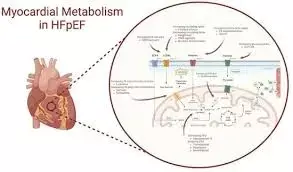- Home
- Medical news & Guidelines
- Anesthesiology
- Cardiology and CTVS
- Critical Care
- Dentistry
- Dermatology
- Diabetes and Endocrinology
- ENT
- Gastroenterology
- Medicine
- Nephrology
- Neurology
- Obstretics-Gynaecology
- Oncology
- Ophthalmology
- Orthopaedics
- Pediatrics-Neonatology
- Psychiatry
- Pulmonology
- Radiology
- Surgery
- Urology
- Laboratory Medicine
- Diet
- Nursing
- Paramedical
- Physiotherapy
- Health news
- Fact Check
- Bone Health Fact Check
- Brain Health Fact Check
- Cancer Related Fact Check
- Child Care Fact Check
- Dental and oral health fact check
- Diabetes and metabolic health fact check
- Diet and Nutrition Fact Check
- Eye and ENT Care Fact Check
- Fitness fact check
- Gut health fact check
- Heart health fact check
- Kidney health fact check
- Medical education fact check
- Men's health fact check
- Respiratory fact check
- Skin and hair care fact check
- Vaccine and Immunization fact check
- Women's health fact check
- AYUSH
- State News
- Andaman and Nicobar Islands
- Andhra Pradesh
- Arunachal Pradesh
- Assam
- Bihar
- Chandigarh
- Chattisgarh
- Dadra and Nagar Haveli
- Daman and Diu
- Delhi
- Goa
- Gujarat
- Haryana
- Himachal Pradesh
- Jammu & Kashmir
- Jharkhand
- Karnataka
- Kerala
- Ladakh
- Lakshadweep
- Madhya Pradesh
- Maharashtra
- Manipur
- Meghalaya
- Mizoram
- Nagaland
- Odisha
- Puducherry
- Punjab
- Rajasthan
- Sikkim
- Tamil Nadu
- Telangana
- Tripura
- Uttar Pradesh
- Uttrakhand
- West Bengal
- Medical Education
- Industry
Liraglutide improves myocardial perfusion, myocardial energetics and exercise capacity in Diabetics without CVD: Study

Liraglutide improves myocardial perfusion, myocardial energetics and exercise capacity in Diabetics without CVD suggests a study published in the Journal of the American College of Cardiology.
Type 2 diabetes (T2D) is characterized by insulin resistance (IR) and dysregulated insulin secretion. Glucagon-like peptide-1 receptor agonist liraglutide promotes insulin secretion, whereas thiazolidinedione-pioglitazone decreases IR. This study aimed to compare the efficacies of increasing insulin secretion vs decreasing IR strategies for improving myocardial perfusion, energetics, and function in T2D via an open-label randomized crossover trial. Forty-one patients with T2D (age 63 years [95% CI: 59-68 years], 27 [66%] male, body mass index 27.8 kg/m2) [95% CI: 26.1-29.5 kg/m2)]) without cardiovascular disease were randomized to liraglutide or pioglitazone for a 16-week treatment followed by an 8-week washout and a further 16-week treatment with the second trial drug. Participants underwent rest and dobutamine stress 31phosphorus magnetic resonance spectroscopy and cardiovascular magnetic resonance for measuring the myocardial energetics index phosphocreatine to adenosine triphosphate ratio, myocardial perfusion (rest, dobutamine stress myocardial blood flow, and myocardial perfusion reserve), left ventricular (LV) volumes, systolic and diastolic function (mitral in-flow E/A ratio), before and after treatment. The 6-minute walk-test was used for functional assessments.
Results: Pioglitazone treatment resulted in significant increases in LV mass (96 g [95% CI: 68-105 g] to 105 g [95% CI: 74-115 g]; P = 0.003) and mitral-inflow E/A ratio (1.04 [95% CI: 0.62-1.21] to 1.34 [95% CI: 0.70-1.54]; P = 0.008), and a significant reduction in LV concentricity index (0.79 mg/mL [95% CI: 0.61-0.85 mg/mL] to 0.73 mg/mL [95% CI: 0.56-0.79 mg/mL]; P = 0.04). Liraglutide treatment increased stress myocardial blood flow (1.62 mL/g/min [95% CI: 1.19-1.75 mL/g/min] to 2.08 mL/g/min [95% CI: 1.57-2.24 mL/g/min]; P = 0.01) and myocardial perfusion reserve (2.40 [95% CI: 1.55-2.68] to 2.90 [95% CI: 1.83-3.18]; P = 0.01). Liraglutide treatment also significantly increased the rest (1.47 [95% CI: 1.17-1.58] to 1.94 [95% CI: 1.52-2.08]; P =0.00002) and stress phosphocreatine to adenosine triphosphate ratio (1.32 [95% CI: 1.05-1.42] to 1.58 [95% CI: 1.19-1.71]; P = 0.004) and 6-minute walk distance (488 m [95% CI: 458-518 m] to 521 m [95% CI: 481-561 m]; P = 0.009). Liraglutide treatment resulted in improved myocardial perfusion, energetics, and 6-minute walk distance in patients with T2D, whereas pioglitazone showed no effect on these parameters
Reference:
Amrit Chowdhary, Sharmaine Thirunavukarasu, Tobin Joseph, Nicholas Jex, Sindhoora Kotha, Marilena Giannoudi, Henry Procter, Lizette Cash, Sevval Akkaya, David Broadbent, Hui Xue, Peter Swoboda, Ladislav Valkovič, Peter Kellman, Sven Plein, Oliver J. Rider, Stefan Neubauer, John P. Greenwood, Eylem Levelt. Liraglutide Improves Myocardial Perfusion and Energetics and Exercise Tolerance in Patients With Type 2 Diabetes, Journal of the American College of Cardiology. Volume 84, Issue 6, 2024. Pages 540-557, ISSN 0735-1097, https://doi.org/10.1016/j.jacc.2024.04.064. (https://www.sciencedirect.com/science/article/pii/S0735109724074928)
Dr. Shravani Dali has completed her BDS from Pravara institute of medical sciences, loni. Following which she extensively worked in the healthcare sector for 2+ years. She has been actively involved in writing blogs in field of health and wellness. Currently she is pursuing her Masters of public health-health administration from Tata institute of social sciences. She can be contacted at editorial@medicaldialogues.in.
Dr Kamal Kant Kohli-MBBS, DTCD- a chest specialist with more than 30 years of practice and a flair for writing clinical articles, Dr Kamal Kant Kohli joined Medical Dialogues as a Chief Editor of Medical News. Besides writing articles, as an editor, he proofreads and verifies all the medical content published on Medical Dialogues including those coming from journals, studies,medical conferences,guidelines etc. Email: drkohli@medicaldialogues.in. Contact no. 011-43720751


